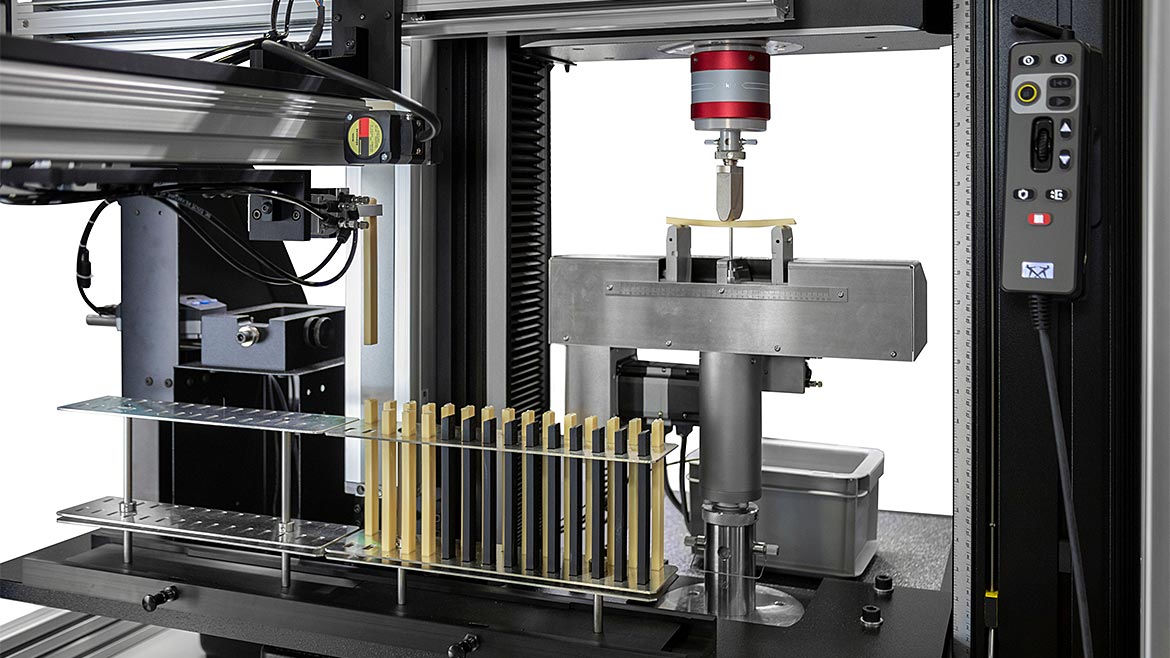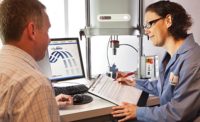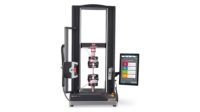Materials testing is critical for the development and quality assurance of all products in the market, with some industries such as biomedical, aerospace, and automotive companies experiencing high volumes of testing throughput in addition to strict quality standards. Because of these requirements, automation is consistently at the forefront of discussions when it comes to improving testing processes for these companies.
There are many reasons why customers decide to pursue an automated solution for their materials testing needs. Understanding the time it takes to perform different phases of your testing cycle can help you identify places where automation can be beneficial. Whether automation helps to optimize the test procedure, reduce the safety risks to the operator, or free up the operator to perform more value-added tasks, automated devices can provide a significant return on investment (ROI).
While labor savings and ROI are typically the biggest influencers of the decision to automate, automation can also provide cost savings in other ways. For example, inefficient testing can produce poor results through specimen or test failures. In industries that require high volume throughput, failed specimens can cost a company thousands of dollars in wasted material. However, many of these failed tests can be the result of inconsistent operator practices, such as improper specimen and extensometer alignment, insufficient gripping, and failure to properly control the test device. Test results are influenced by many factors, and inconsistent data and failed tests are often the result of many incremental errors and inconsistencies.
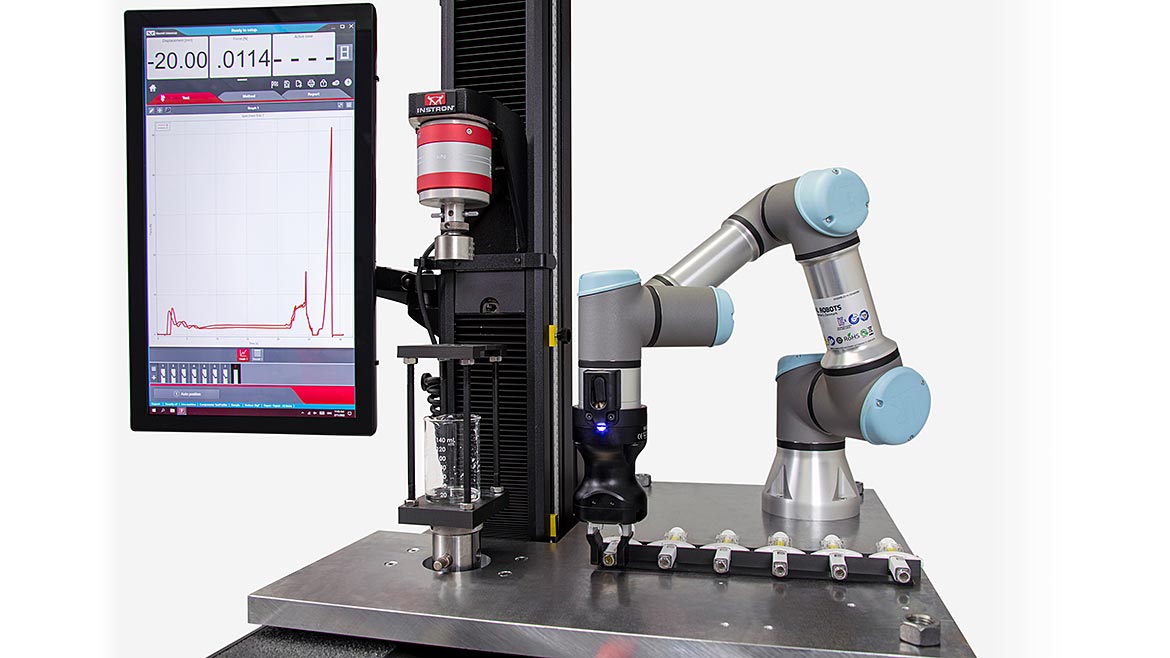
A cobot integrated with a universal testing machine for automated medical device testing. | Source: Instron

Automated extensometers eliminate the need to manually attach an extensometer and offer repeatable placement. | Source: Instron
Automation in materials testing is a spectrum, and there are many different parts of a universal testing machine (fixtures, strain measurement devices, and specimen preparation devices) that can be partially or fully automated depending on the specific needs of your lab. For example, a manual static tension device can be equipped with a fully automatic extensometer. While the operator still must perform measurements and insert specimens, this load device is now considered semi-automated. Labs can then expand on this semi-automated solution in various ways depending on where they experience time delays in their testing cycle. Other examples of automated equipment include measurement devices, specimen insertion, and pneumatic or hydraulic actuated grips. Any of these examples can greatly improve pre-test speed and efficiency in your lab. When test time is a bottleneck to the testing throughput, load frames with multiple load strings can be utilized to semi-automate this portion of the testing cycle.
If part of the testing cycle requires improvement but budget restrictions limit options for a completely robotic system, a semi-automated setup can improve any test laboratory. However, a fully automated testing system adds even more benefits for labs requiring the most advanced solutions. Unlike manual and semi-automated systems and accessories, fully automated test systems have more advanced and cost saving capabilities driven by the technology that is implemented into the applications.

An automated testing system with a safety enclosure. | Source: Instron
While automated accessories can greatly reduce variations in testing data, an automated system provides more thorough repeatability due to the standardization of every part of the testing process. Due to extreme quality control requirements, the biomedical, infrastructure and aerospace industries are rapidly pursuing automated solutions for their labs. Additionally, an automated system optimizes the process and performs with extreme efficiency during procedural tasks and reduces choke points. For example, a robot can perform specimen measurements, software inputs and outputs, and remove specimens while the system is under test. The robotic system is not constrained by the same safety limitations that apply to human operators, and efficiency and throughput are further optimized by the robot’s ability to enter the test space while equipment is in motion.
Ensuring operator safety is one of the testing industry’s top priorities. During the testing process, operators may be susceptible to injury by performing repetitive movements, such as continuously loading and unloading specimens. Because fully automated systems require no user interaction with the frame, these risks to the operator are removed. Additionally, depending on the application and safety requirements, automated systems are often equipped with safety enclosures as an added barrier between the moving robotic components and lab employees.
As one might expect, full automation comes at a premium based on value added features and offerings. It is important to recognize, however, that these prices are capable of producing a larger return on investment. The combination of operator salaries, quality mistakes, and added safety related costs can quickly accumulate to costing laboratories more than the price of a fully automated device. The cost for a fully automated solution can vary significantly depending on the testing application, so understanding and calculating ROI is an important step in the decision-making process when considering an automated testing system.

Operator manually inserting medical test specimen. | Source: Instron
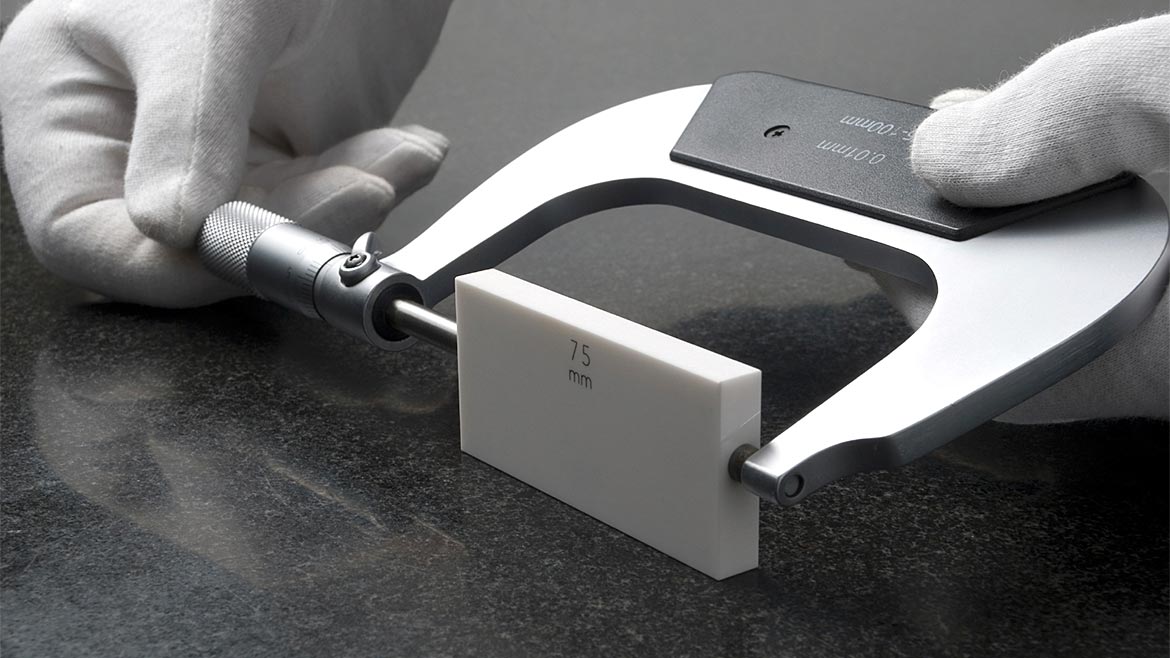
Manual measurements can increase time between testing and can result in data entry errors. | Source: iStock
Understanding where automation adds value to your lab is a critical element of improving your testing processes, and understanding the challenges associated with each stage in the testing cycle can educate labs about which areas provide value in automating. By making incremental improvements through semi-automated solutions or investing in a complete system capable of performing all test services, you can increase efficiency and throughput in the lab, reduce operator related risks, and be confident in the repeatable deliverables of your test offerings.
